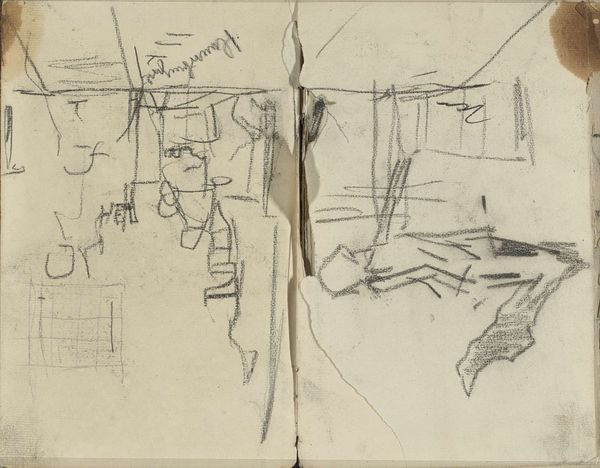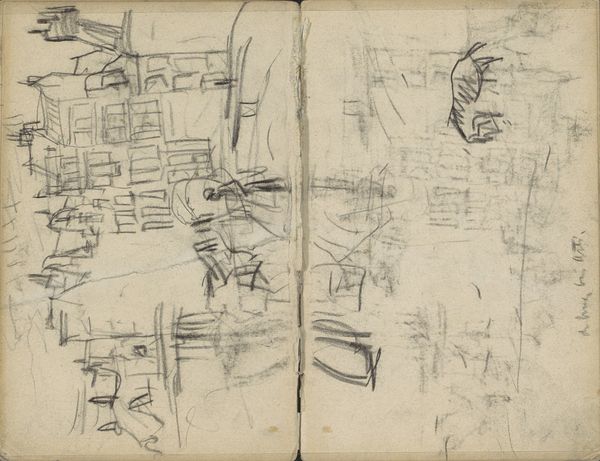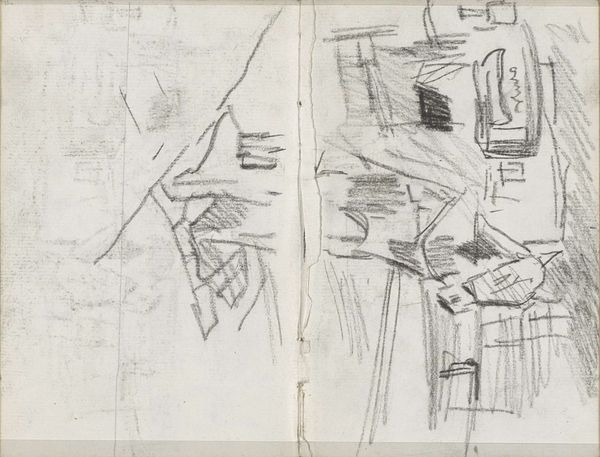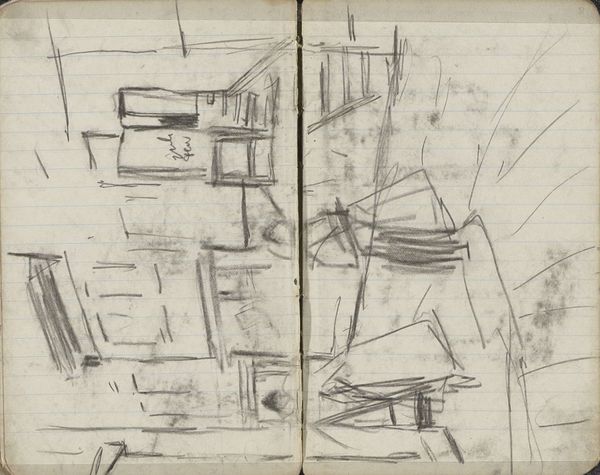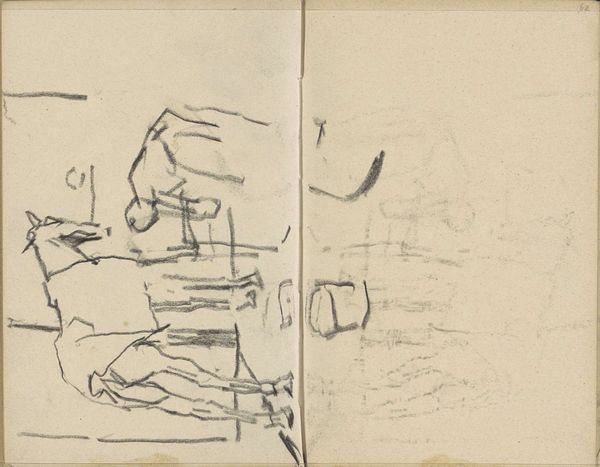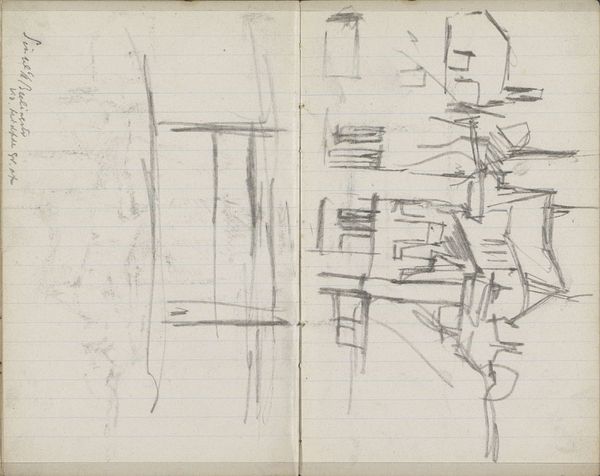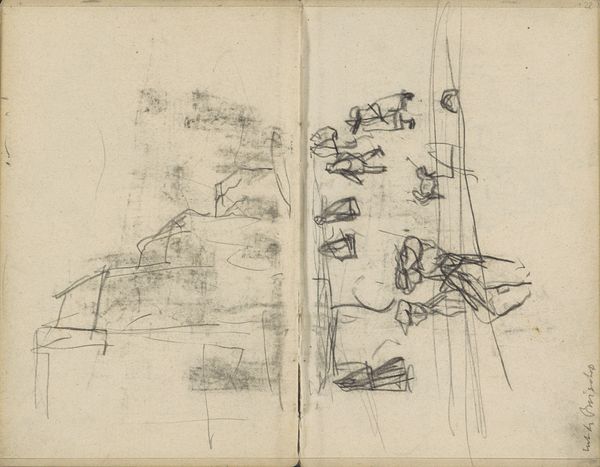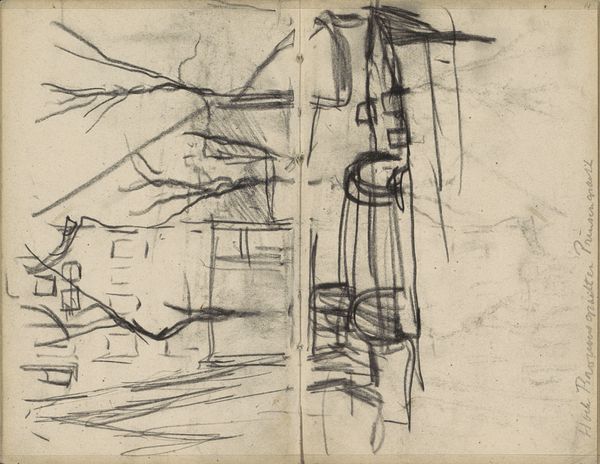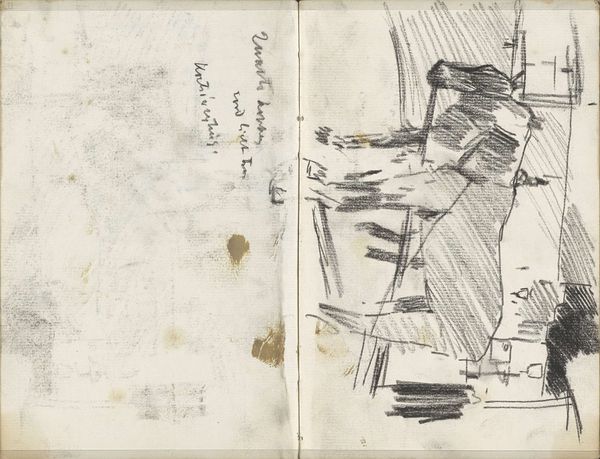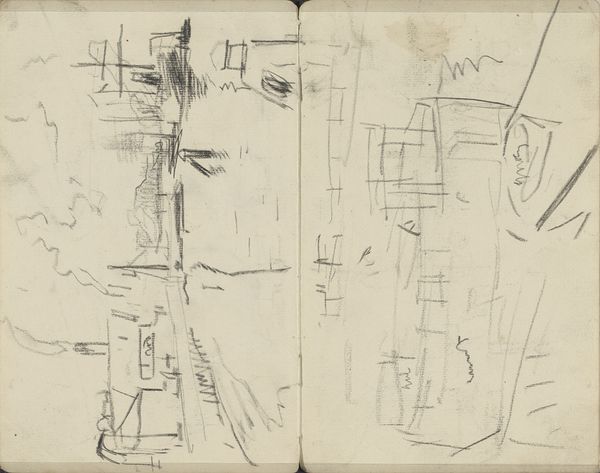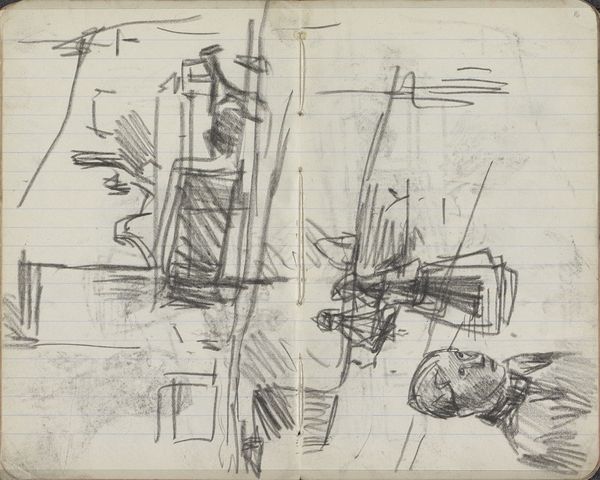
Copyright: Rijks Museum: Open Domain
Editor: This is a quick pencil drawing by George Hendrik Breitner, made between 1896 and 1901. It’s titled “Paard-en-wagen op de Dam te Amsterdam,” which I believe means "Horse and carriage on the Dam Square in Amsterdam." It feels more like a collection of quickly jotted down impressions rather than a polished piece. What strikes you about it? Curator: The immediate feeling I get from this drawing is one of raw urban energy. Breitner, often called the 'painter of Amsterdam,' wasn't interested in picturesque postcard views. He sought to capture the gritty realities of city life, the bustling commerce and constant movement. Considering the period, late 19th century, Amsterdam was undergoing rapid transformation; industrialization, population growth, increasing social stratification… This sketch embodies that shift. How does that perspective resonate with you, considering its social and historical background? Editor: That’s fascinating! I was so focused on the somewhat messy, incomplete lines that I missed that entirely. Knowing it’s about capturing urban life on the brink of major changes… it recontextualizes the roughness for me. So, the hasty execution is actually a reflection of that rapid change? Curator: Precisely. The very act of sketching, quickly capturing a fleeting moment, becomes a kind of social commentary. Breitner wasn't trying to idealize Amsterdam, but to document it in its chaotic, dynamic state. We also have to remember photography was emerging as a new way to "capture" images. The rise of photography influenced how painting developed, with some painters turning away from perfect, life-like depiction towards exploring subjective experiences. What do you make of that in the context of this artwork? Editor: That makes a lot of sense. He’s not competing with a photograph, but instead capturing something a photograph *can't*, the energy and pace of change. Now I'm looking at this with totally different eyes. Thanks! Curator: My pleasure. Art should never be divorced from the realities in which it exists. This drawing is a reminder to always question whose stories are being told, and how they're being told.
Comments
No comments
Be the first to comment and join the conversation on the ultimate creative platform.
